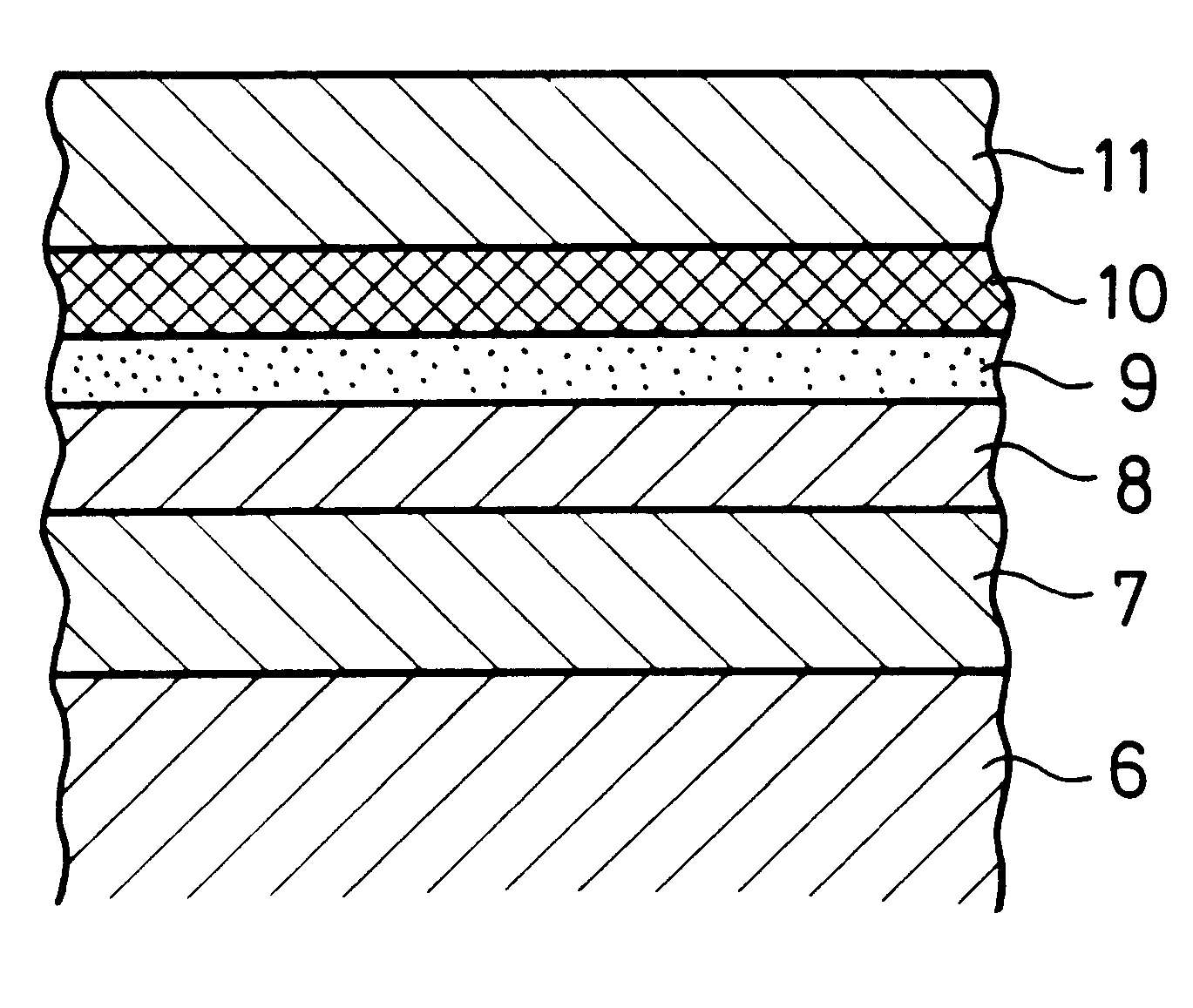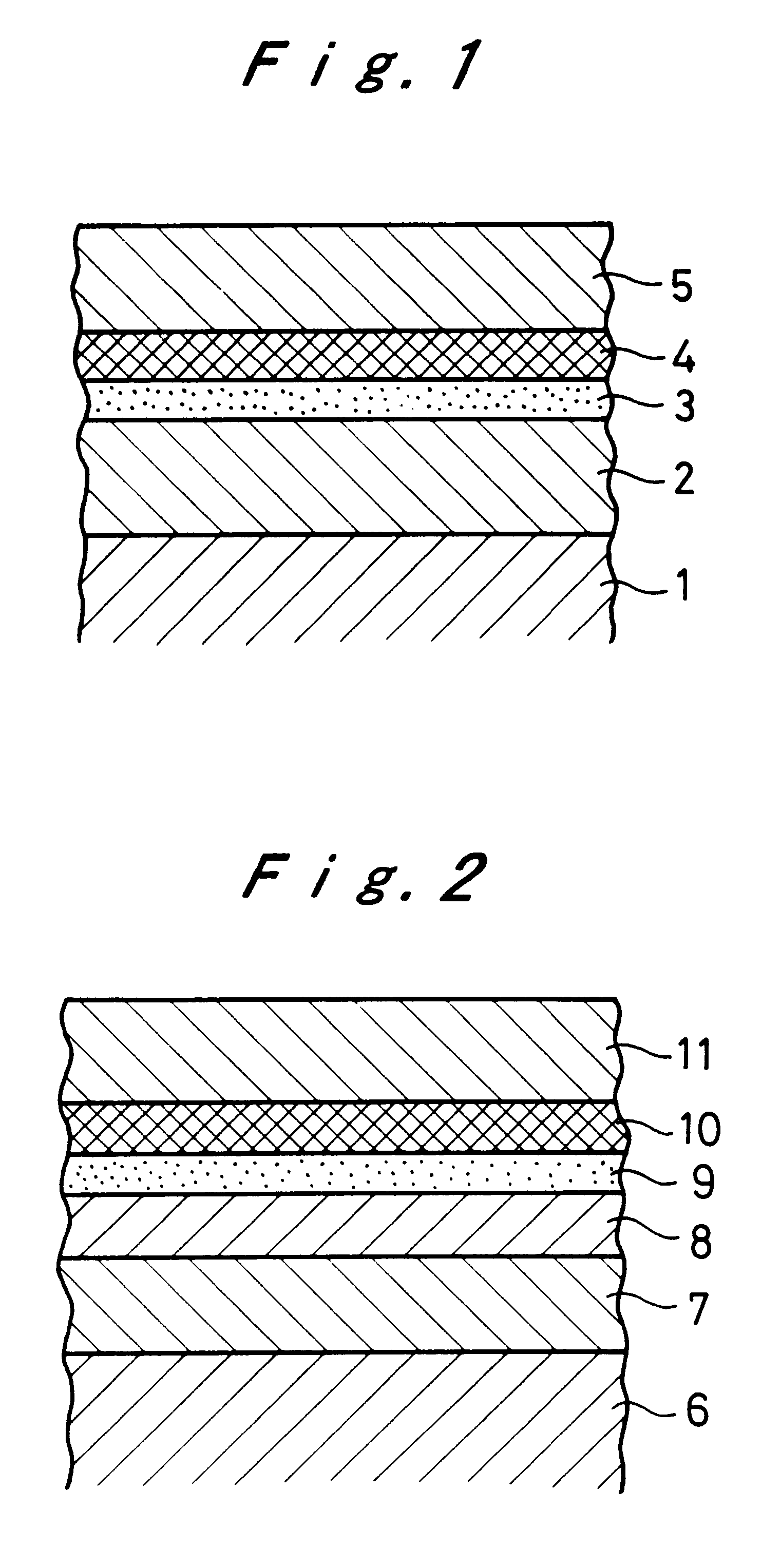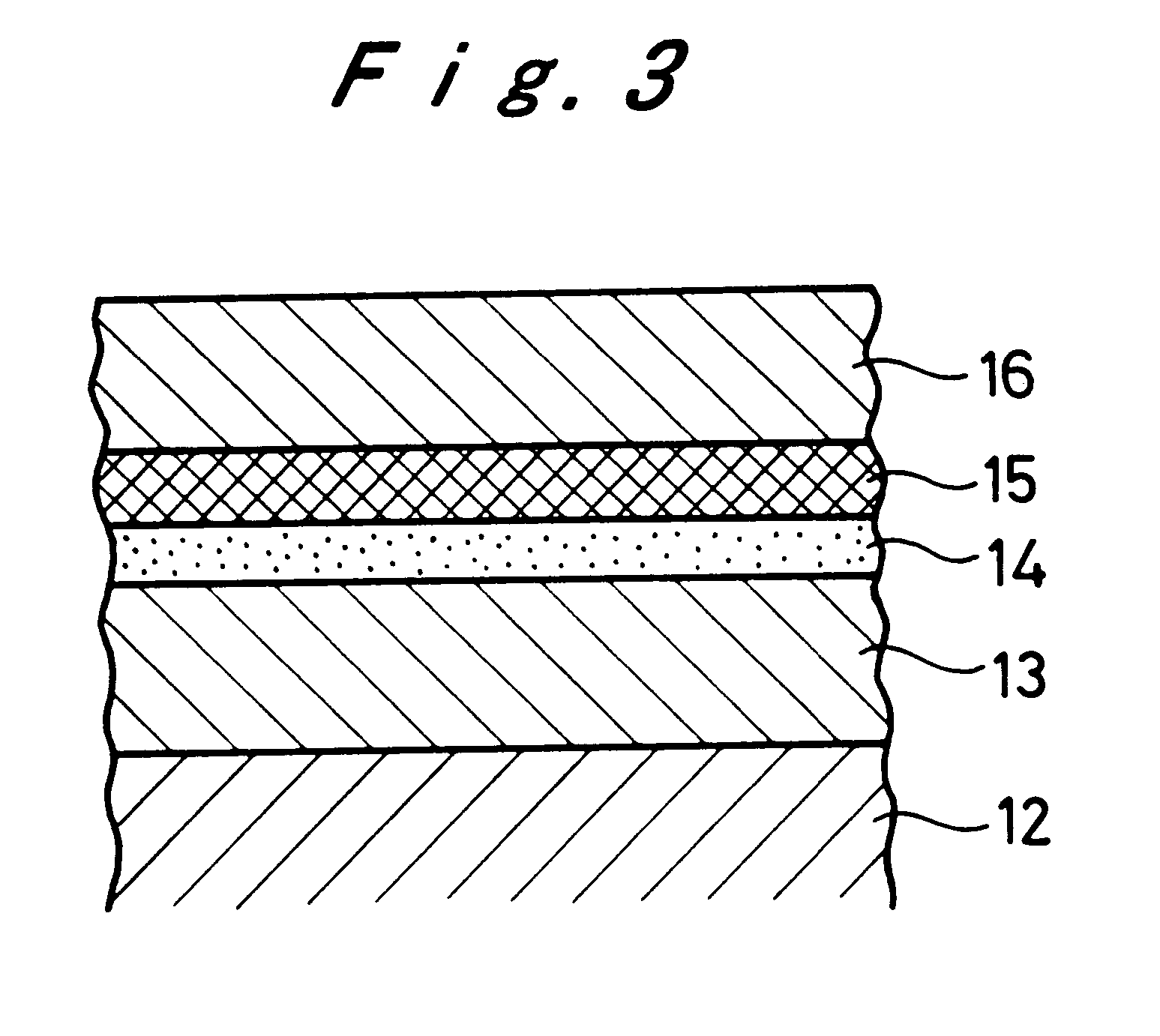Hard carbon coating-clad base material
a technology of hard carbon coating and base material, which is applied in the direction of superimposed coating process, transportation and packaging, coatings, etc., can solve the problems of shortening the life of hard carbon coating, difficult to form hard carbon coating on the surface of any of various metal base materials, such as stainless steel base materials, and achieve excellent corrosion resistance, adhesion and abrasion resistance.
- Summary
- Abstract
- Description
- Claims
- Application Information
AI Technical Summary
Benefits of technology
Problems solved by technology
Method used
Image
Examples
example 1
First, a nickel-phosphorus alloy coating having a thickness of 0.5-1.0 .mu.m was formed as a substratal metal coating on a base material of SK steel having a length of 20 mm, a width of 25 mm and a thickness of 1 mm by an electroless nickel-phosphorus plating. This plating was performed in a plating bath having the following composition under the following plating conditions.
Subsequently, a titanium coating having a thickness of 0.1 .mu.m was formed on the nickel-phosphorus alloy coating by the sputtering process, and a silicon coating having a thickness of 0.3 .mu.m was similarly formed on the titanium coating, thereby forming a two-layer intermediate metal coating.
Thereafter, a hard carbon coating having a thickness of 2 .mu.m was formed on the above silicon coating according to the RFP-CVD process under the following conditions, thereby obtaining a hard carbon coating-clad base material having a structure shown in FIG. 1.
The thus obtained hard carbon coating-clad base material wa...
example 2
A hard carbon coating-clad base material having a structure as shown in FIG. 1 was obtained in the same manner as in Example 1, except that, after the formation of the nickel-phosphorus alloy coating, an aging treatment was conducted at 400.degree. C. for 60 minutes in non-oxidizing furnace, followed by the formation of the titanium coating.
The hardness of the above aged nickel-phosphorus alloy coating per se was 900 Nkgf / mm.sup.2 in terms of Vickers hardness (Hv), demonstrating that the aging treatment increased the hardness of the nickel-phosphorus alloy coating per se. In this connection, the hardness of the nickel-phosphorus alloy coating per se before the aging treatment was 350-400 Nkgf / mm.sup.2 in terms of Vickers hardness (Hv).
The thus obtained hard carbon coating-clad base material was subjected to the above CASS and artificial sweat immersion tests. In this Example, neither peeling nor corrosion was observed in the tests.
Further, the abrasion resistance test was performed,...
example 3
First, a nickel-phosphorus alloy coating having a thickness of 0.5-1.0 .mu.m was formed on a base material of brass having a length of 20 mm, a width of 25 mm and a thickness of 1 mm by the electroless nickel-phosphorus plating in the same manner as in Example 1.
Subsequently, a chromium coating having a thickness of 0.5 .mu.m as another layer of the substratal metal coating was formed on the nickel-phosphorus alloy coating by a wet plating process. The wet plating was performed in a plating bath having the following composition under the following plating conditions.
Then, a titanium coating having a thickness of 0.1 .mu.m was formed on the chromium coating by the sputtering process, and a silicon coating having a thickness of 0.3 .mu.m was similarly formed on the titanium coating, thereby forming a two-layer intermediate metal coating.
Thereafter, a hard carbon coating having a thickness of 2 .mu.m was formed on the above silicon coating according to the same RFP-CVD process as in Ex...
PUM
| Property | Measurement | Unit |
|---|---|---|
| compressive stress | aaaaa | aaaaa |
| thickness | aaaaa | aaaaa |
| thickness | aaaaa | aaaaa |
Abstract
Description
Claims
Application Information
 Login to View More
Login to View More - R&D
- Intellectual Property
- Life Sciences
- Materials
- Tech Scout
- Unparalleled Data Quality
- Higher Quality Content
- 60% Fewer Hallucinations
Browse by: Latest US Patents, China's latest patents, Technical Efficacy Thesaurus, Application Domain, Technology Topic, Popular Technical Reports.
© 2025 PatSnap. All rights reserved.Legal|Privacy policy|Modern Slavery Act Transparency Statement|Sitemap|About US| Contact US: help@patsnap.com



